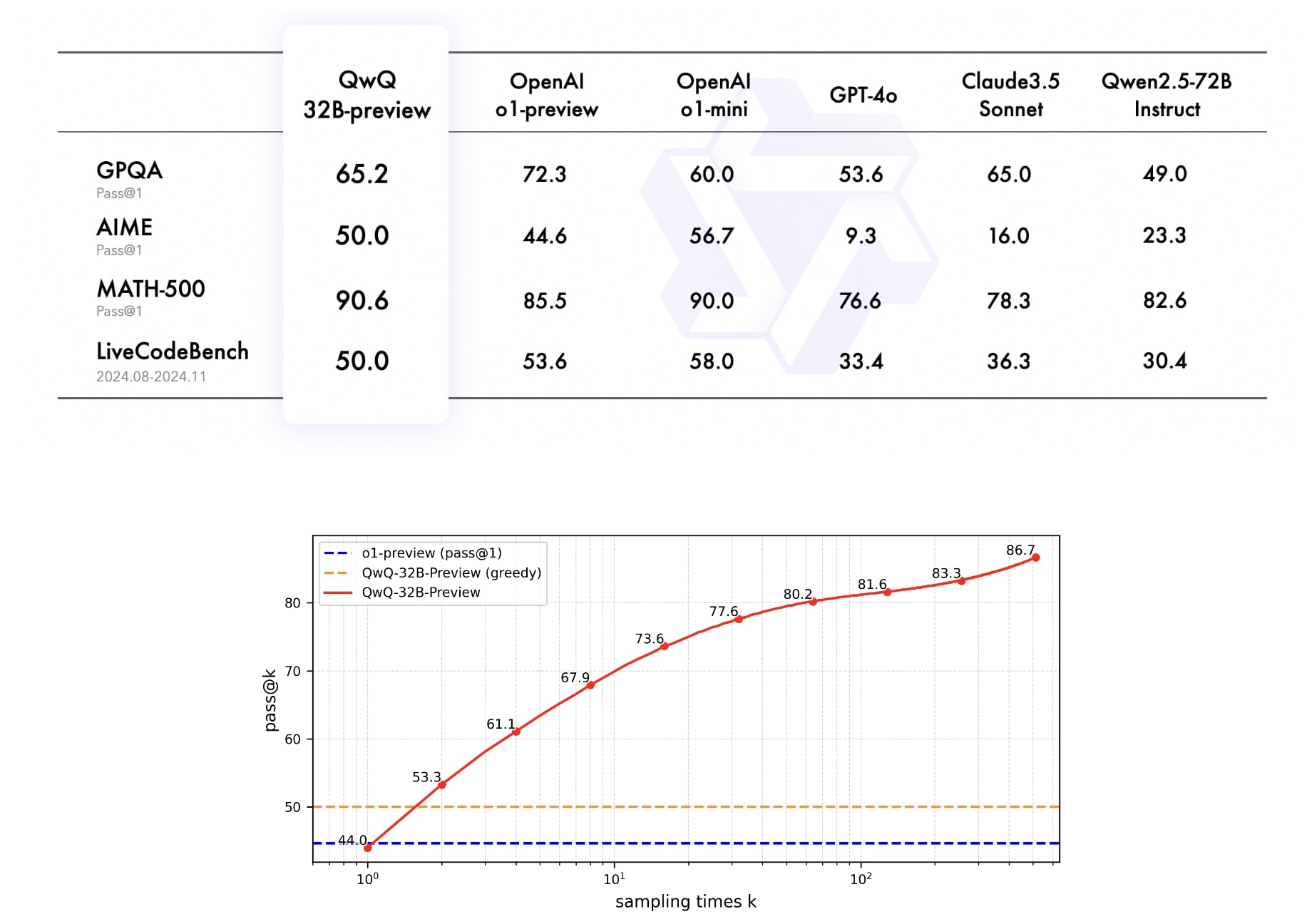A new o1-like model based on Qwen-2.5-32B reportedly beats Claude 3.5 Sonnet[1] on a bunch of difficult reasoning benchmarks. A new regime dawns.

The blog post reveals nothing but the most inane slop ever sampled:
What does it mean to think, to question, to understand? These are the deep waters that QwQ (Qwen with Questions) wades into. Like an eternal student of wisdom, it approaches every problem - be it mathematics, code, or knowledge of our world - with genuine wonder and doubt. QwQ embodies that ancient philosophical spirit: it knows that it knows nothing, and that’s precisely what drives its curiosity. Before settling on any answer, it turns inward, questioning its own assumptions, exploring different paths of thought, always seeking deeper truth. Yet, like all seekers of wisdom, QwQ has its limitations. This version is but an early step on a longer journey - a student still learning to walk the path of reasoning. Its thoughts sometimes wander, its answers aren’t always complete, and its wisdom is still growing. But isn’t that the beauty of true learning? To be both capable and humble, knowledgeable yet always questioning? We invite you to explore alongside QwQ, embracing both its insights and its imperfections as part of the endless quest for understanding.
The model is available on HuggingFace. It's not yet clear when we'll hear more about the training details. EDIT: We can expect an official announcement tomorrow.
- ^
Not clear if this is Sonnet 3.5 new or old. For this, I blame Anthropic.